My favourite photographer takes photos of fat blokes
Cankles and melty ice creams abound in the work of Martin Parr, Britain’s greatest living photographer
I’ve been busy this week freelancing at not one, not two, but three different Condé Nast magazines – the hustle never stops – and although I wanted to write something about Native Americans on screen, I don’t think I’ve quite got my ducks in a row, yet. So keep an eye out for that one, which should be a banger, but until then…
We’re going to look at some sunburned British men on the beach.
Spring has sprung in England, which means that within no time at all, it will be Martin Parr season. Parr is a photographer, born in 1952, who has made a name for himself capturing – among other things – the weirdness of what I’m going to call English leisure-seekers. He wanders through both seaside towns and holiday resorts abroad, along rundown piers and beside decrepit greyhound tracks, capturing the populace on camera as they cut loose and relax.
Parr’s photography is fascinating because it’s immediately contentious; a lot of people dislike his work because they consider it condescending and snobby, as though he’s demeaning his subjects and looking down at them via the viewfinder. I think that’s wrong, but I’ll also be the first to admit that intention can be secondary to effect. Because Parr’s photos are, on the face of it, very unflattering – he shoots bingo wings the same way others shoot bikini lines, and his subjects are decidedly not beach body ready. But his photography is also very funny, in quite a charming and good-faith way. It’s lurid and saturated not only in colour, but in implication. It makes shit things look, if not fun exactly, then at least somehow sort of tragically heroic. You could describe it as “nationalist kitsch”.


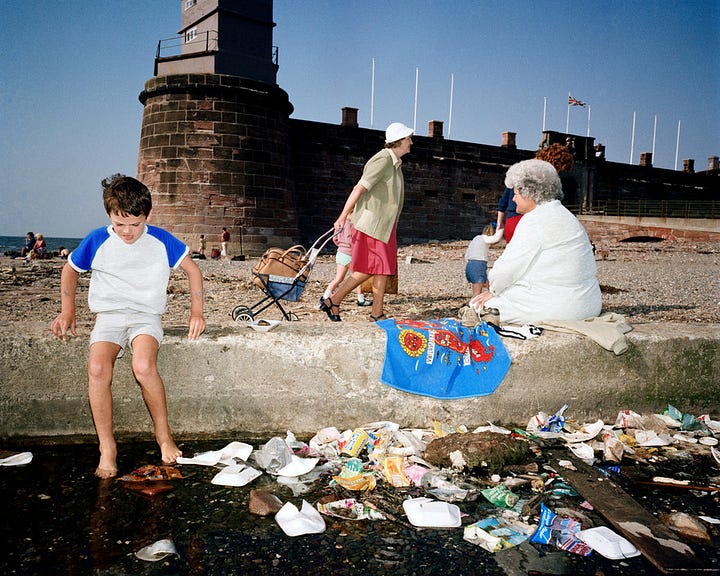

Parr himself, by all accounts, is wry and self-aware, if deadly serious about the image-making potential his profession. He was profiled last month in the Guardian by Miranda Sawyer, who seemed to be very taken with the man. It was a great piece; I learned that apparently, Parr collects Spice Girls merch, ephemera related to spacefaring Soviet dogs like Laika, and “Saddam Hussein watches” (which are presumably watches that look like Saddam would have enjoyed them, rather than ones with his face on the dial. Though with Parr you never know. And that bushy Ba’athist moustache would make for a great pair of hands…).
It would be easy to take the piss out of these pictures. They are objectively ridiculous, after all, and Parr tells Sawyer in her profile that he believes “life is funny”, and that he tries to create images that reflect that. At heart, I think his stated intention means the images come out good-natured. They’re both very weird and otherworldly, but also extremely mundane. And they make you realise that we’re swamped in an overwhelming volume of visual imagery, almost none of which is recognisable in our real lives. Case in point: when did you last see beer bellies like this in the work of a professional photographer? When did you last see someone with a peeling pate? When did you last even see a person over 70?
Parr also has a wicked eye for the visceral. Beyond wobbly Englishmen, he shoots food brilliantly – “real” food, that is, like the sort of sandwiches you get out of a plastic box from Aldi and which sweat slightly. He’s done celebrities – of course he has – but somehow, even the late Vivienne Westwood in an Extinction Rebellion t-shirt can’t really compete with a child in Disneyland Tokyo tearing into some sort of horrible barbequed meat.
Part of the unease around Parr’s photos stems, in my opinion, from the new culture war being fought in Britain, where the edges of the nation are broadly but without exception more right-wing than most of the rest of the country. Britain’s seasides were the most likely to vote for Brexit, and of Reform’s five elected MPs last year, four were in seaside seats. Many of these towns, once prosperous on the back of booming tourist seasons, have been hollowed out by cheap flights to Europe which make a week or weekend in Málaga or Mykonos more appealing than Skegness or Scarborough. In other words, we have the opposite phenomenon to the USA: our coasts are anything but elite.
But that’s not the whole story: Parr is now 72, and he has been working since long before Brexit was even a twinkle in Nigel’s eye. I wrote about England and Ireland a few months ago, and quoted Paul Theroux’s travelogue The Kingdom by the Sea in it. Theroux traversed the length of the British and Northern Irish coastline in 1982, the summer that Thatcher dispatched the Royal Navy to bloody the junta’s nose. That was the year Parr published his first collection, Bad Weather, and I think a lot of his subsequent pictures capture the same mood: a country that is muscular and belligerent, gripped by post-imperial revanchism.1 But the people in Parr’s early images are hardly the ones who are about to benefit from Thatcher’s Big Bang. His best-known and most iconic work is the punning The Last Resort, a collection of photos taken in New Brighton, Merseyside, in 1983-86. Anyone who knows anything about recent British history knows that these parts of the country did not come out of the 1980s in very good shape.

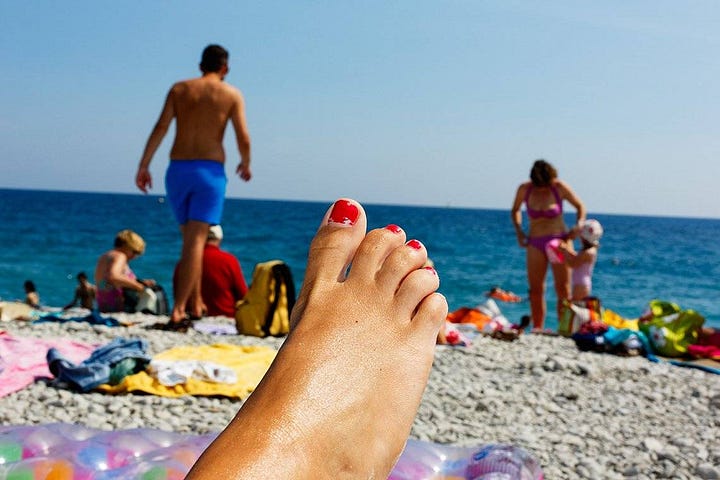
In 2017, Parr established the Martin Parr Foundation in Bristol, and it is now where prints of the majority of his work are kept – some 750,000 of them, apparently, in 10-by-8-inch format. It’s good that there are well organised, because he’s published more than 145 books since the early 1980s, and exhibited more than 80 times worldwide. Nowadays, if Parr wants to publish a book, he barely has to go outside (though he still does): his archive is so extensive and well catalogued that he can just search for “dogs” or “children” or “flags” and put something masterful together.
The Foundation also plays host to exhibitions of the work of other photographers, and houses a library of 5,000 photography books. Parr was diagnosed with bone marrow cancer in 2021, and though he is now in remission, he’s pretty open in that Sawyer interview about how it made him think about the shape of the next few years of his life. The Foundation must be intended as something of a legacy.
Is Parr the most significant photographer working in Britain today? I guess David Bailey is still around; he’s probably the only other contender. I prefer Parr, anyway. Bailey shoots for glamour – to get in front of his camera, you have to have a UK number one, or you have to be Twiggy or the Kray Twins in 1966. Parr, meanwhile, is lurking around the bookies and the pubs, waiting for the ice cream to drip down onto our distended bellies and immortalise it. He shows us as we really are: ugly, ridiculous, hilarious, glorious.
Bad Weather is not actually like this. It is, aptly, a collection of photos of British people caught in the rain. But my point is that this was the national mood in the UK when he started working and publishing in earnest.


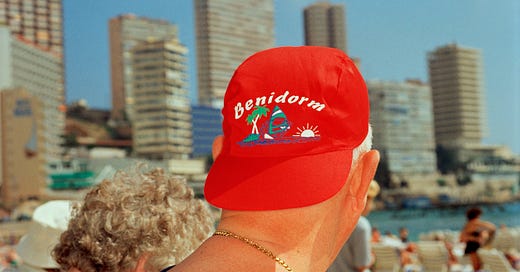





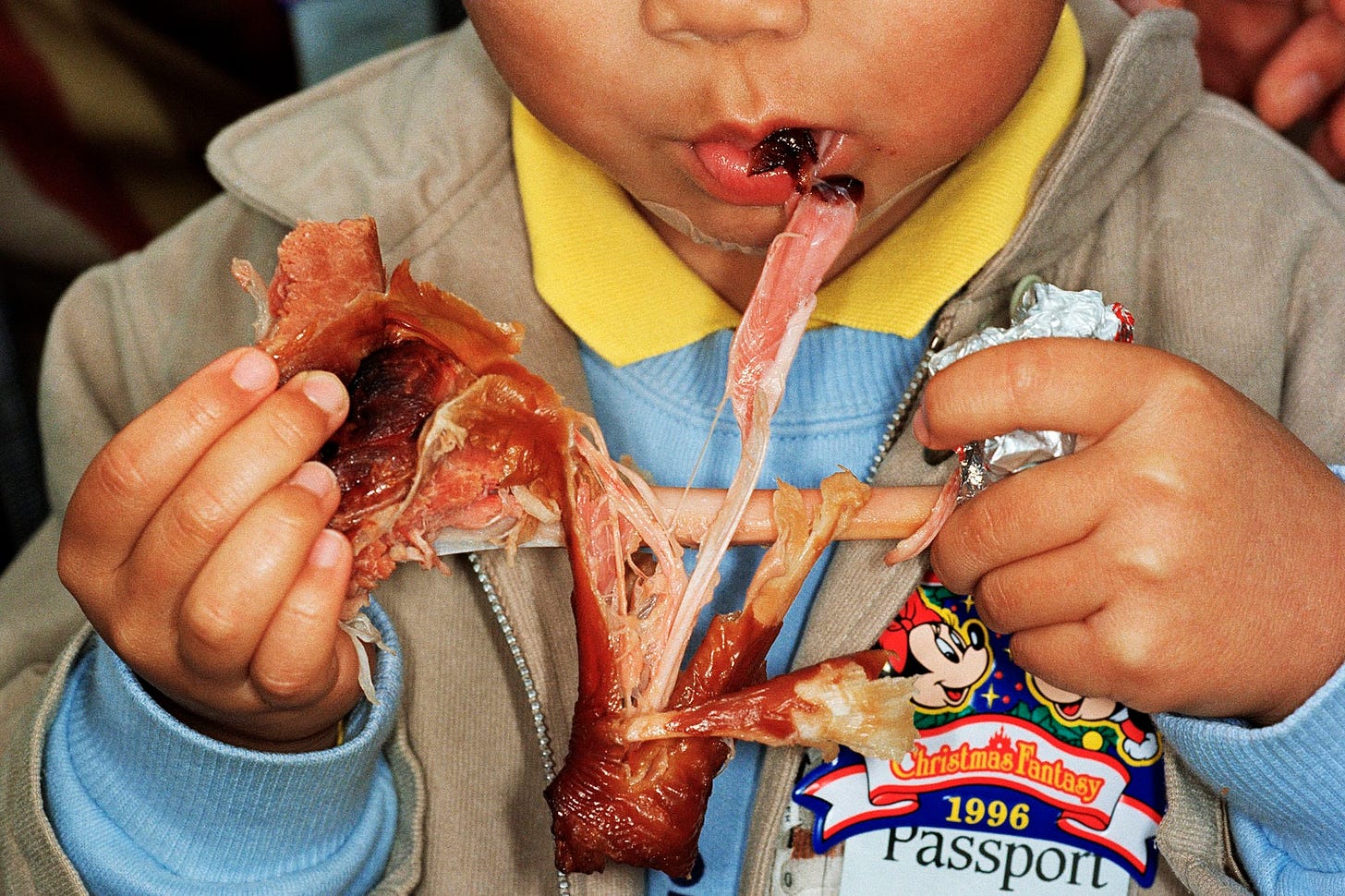

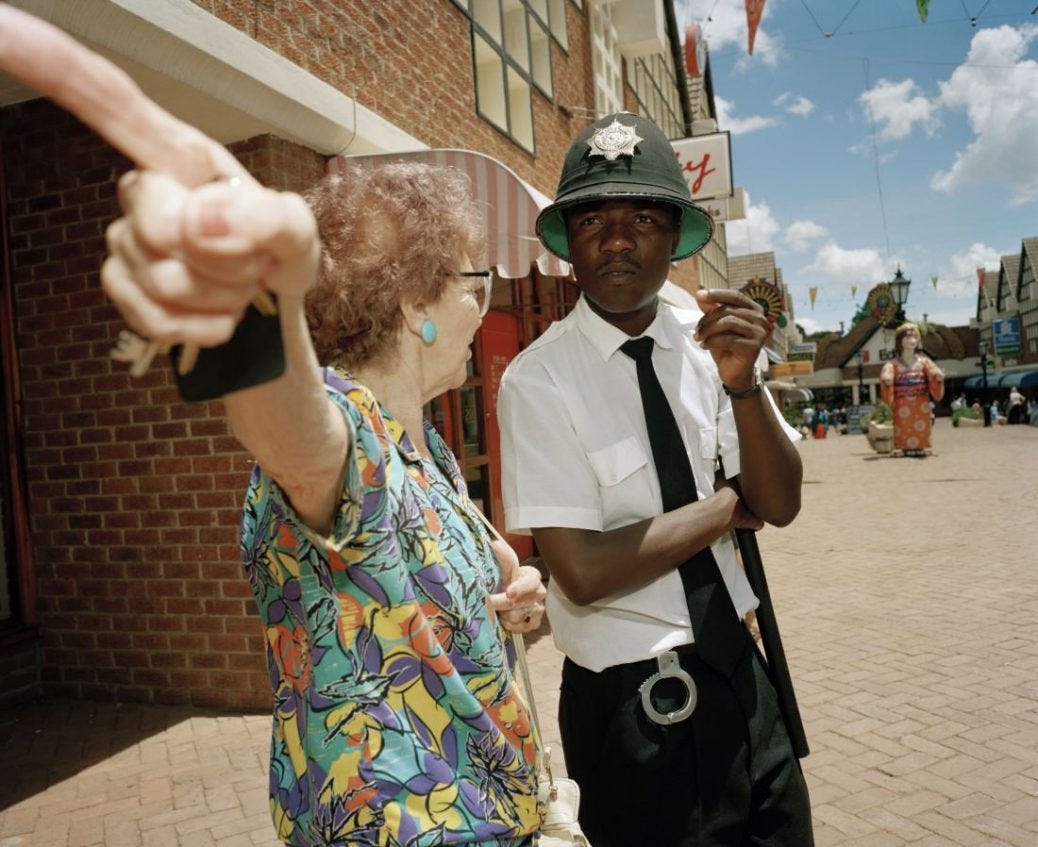

Didn’t know about this! Thank you for the introduction
This is one of the best descriptions of Parr’s work I’ve ever read, thank you.